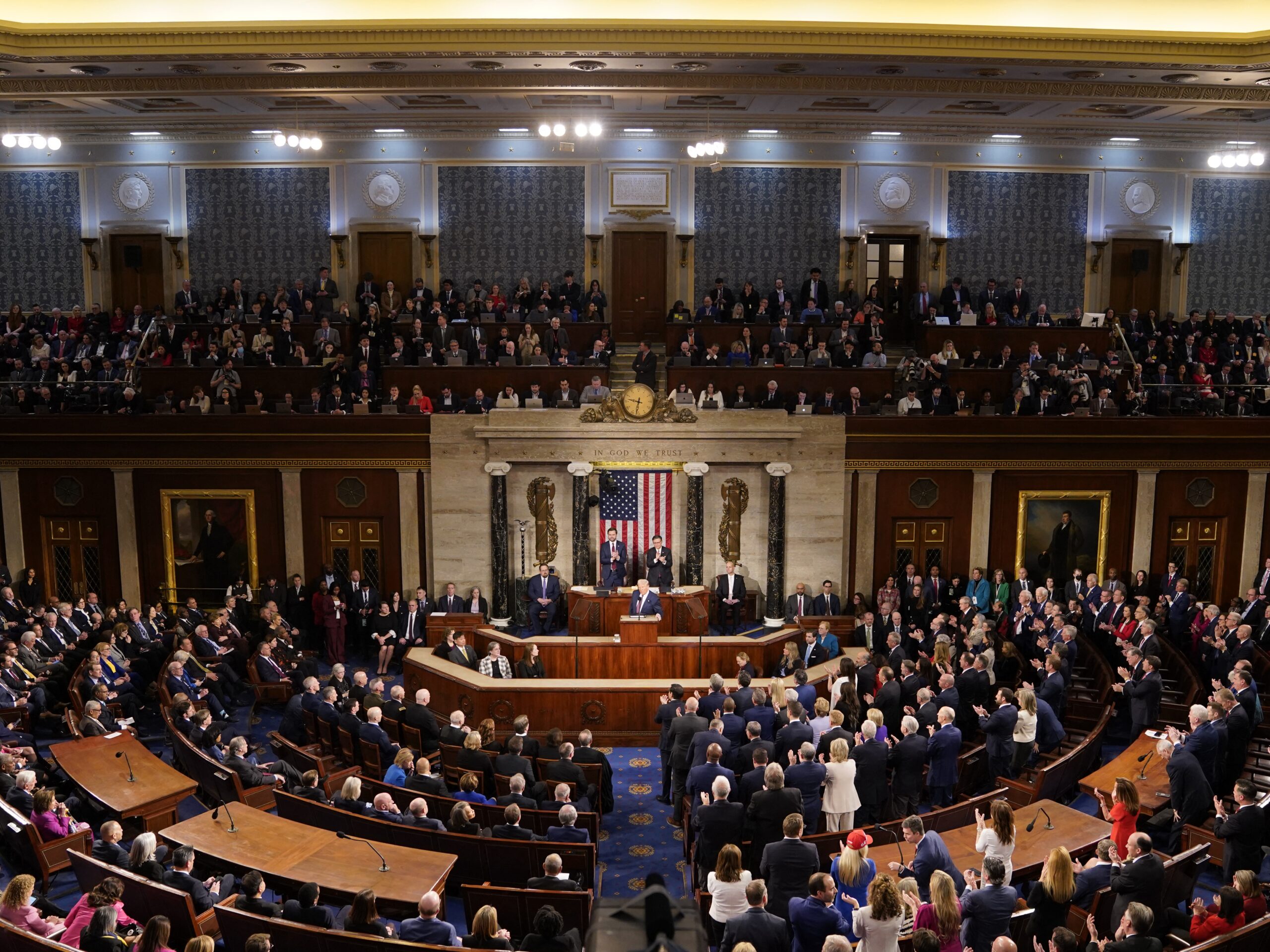By Domenico Montanaro
President Trump’s trade war dominated the week, sending global markets reeling. He then put a 90-day pause on some tariffs, but left a 10% across-the-board tariff and ramped up his standoff with China. … The Supreme Court also gave Trump a green light on deportations and government firings — for now. … Congress squeezed through a measure that paves the path for Trump’s legislative agenda in one “big, beautiful bill.” … And Trump continued his campaign of retribution against those who’ve stood in his way.
Here are four takeaways from week 12 in our continued look at President Trump’s first 100 days in office:
1. How Trump has handled tariffs shows the furthest thing from stability and predictability. His team says that’s the point, but most don’t appear to be buying it.
On multiple occasions, Trump has referred to himself as “an extremely stable genius.” This week, though, put in stark relief the chaos that has so often defined Trump’s time in the White House. Some are still trying to sell Trump’s strategy as The Art of the Deal.
“No one creates leverage for himself like President Trump,” Treasury Secretary Scott Bessent said this week. White House Press Secretary Karoline Leavitt noted that 70 countries have reached out to make “tailor-made deals.”
There have been mixed messages from Trump advisers — some insisting that the tariffs are permanent, others saying they’re a negotiation tactic. Trump himself said they can be “both.”
“There can be permanent tariffs — and there can also be negotiations because there are things that we need beyond tariffs,” Trump told reporters.
Trump seemed to dig in on tariffs while talking to reporters on Air Force One on Sunday. He pushed back against a reporter’s question of whether there’s a threshold of pain that he’s willing to tolerate in the markets.
“I think your question is so stupid,” Trump said. “I mean, I think it’s just — well, I don’t want anything to go down. But sometimes you have to take medicine to fix something.”
Two more days of a market in the red ensued. By Wednesday morning, he was advising people in ALL CAPS on social media: “THIS IS A GREAT TIME TO BUY.”
“BE COOL!” he said in another. “Everything is going to work out well. The USA will be bigger and better than ever before!”
But, by the end of the day, Trump apparently had reached his threshold of market pain. He reversed course, ditching some of the tariffs, because, he said, people “were getting a little bit yippy, a little bit afraid.”
The market rallied Wednesday, but with Trump increasing tariffs to 145% on China, by Thursday, the Dow was down again. And, remember, China has leverage, too, because it buys a lot of U.S. government debt, and they seem to have every intention of using it.
The reality is a lot of damage has already been done — not just to 401(k)s and small businesses stateside, who rely on global supply chains, but also to relationships with trade partners around the world.
Who knows what next week will hold, but right now people just don’t like Trump’s tariff policy. Only 39% said they approve of his handling of trade, according to a Quinnipiac poll, and 7-in-10 think his tariff policies will hurt the U.S. economy in the short term.
Trump advisers continue to tell people that despite all that to “trust in Trump.” The one thing Trump can hang his hat on is that message seems to be getting through to his base. Even though 53% overall in the same survey said they think, in the long term, the tariffs will hurt the economy, almost 9-in-10 Republicans said they think they will help.
2. The Supreme Court gives Trump a green light — for now.
The Trump administration had lost case after case in lower courts. But Trump continues to push the boundaries when it comes to freezing grants to universities, firings of federal workers and deportations — and he’s hoping the conservative majority at the Supreme Court helps him out.

